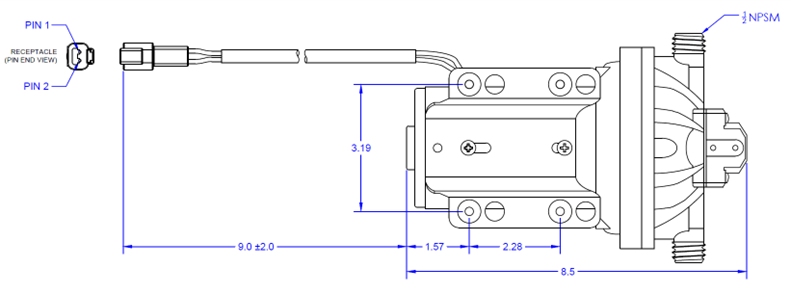Seakeeper 9 Installation Manual (90222-11); S/N 9-233-4900 to Current
4.3 Connecting Seawater to Heat Exchanger
Refer to Figure 31 for typical Seakeeper 9 seawater plumbing arrangement.
- Connect seawater from installer-supplied pump to lower ¾ in. (19 mm) hose barb on heat exchanger. (See Figure 1) Use the same practices as other below waterline seawater plumbing. Required flow rate is 4 GPM (16 LPM) minimum and 8 GPM (30.3 LPM) maximum.
- Connect seawater discharge (upper hose barb) to overboard drain. (See Figure 29) Use the same practices as other below waterline seawater plumbing.
- In addition to initial operation at dock, new installations should be checked for minimum 4 GPM (16 LPM) flow while vessel is at speed and when backing down. If no other method of confirming flow is available, discharge line may be temporarily diverted to a bucket. Flow is calculated from time to fill a known volume. A self-priming seawater pump (customer/installer supplied) may be required due to installation location to maintain water flow in all underway conditions where cavitation near the intake may occur and potentially cause an air-lock condition restricting seawater flow to the heat exchanger.
- Inspect raw water plumbing after sea trial for any signs of leakage.
- Heat exchanger contains removable endcaps to provide access for cleaning the tube bundle.

Seakeeper Optional DC Seawater Pump (P/N 30331)
- Seakeeper offers a self-priming DC Seawater pump operated at 24 VDC for the Seakeeper 9 (Figure 32).
- The pump assembly is pre-wired for connection to Seakeeper 9 Seawater Pump Output Cable, “SW Pump Output” and includes a seawater strainer and various fittings. The pump specifications are as follows:
NOTE: Only use SeaFlo®-provided threaded fittings with DC Seawater Pump 30331.
| Volts | 24 VDC |
| Rated Flow | 5.5 GPM (nominal) |
| Overcurrent Protection Rating | 15 A |
| Ignition Protection | ISO 8846 or equivalent |
